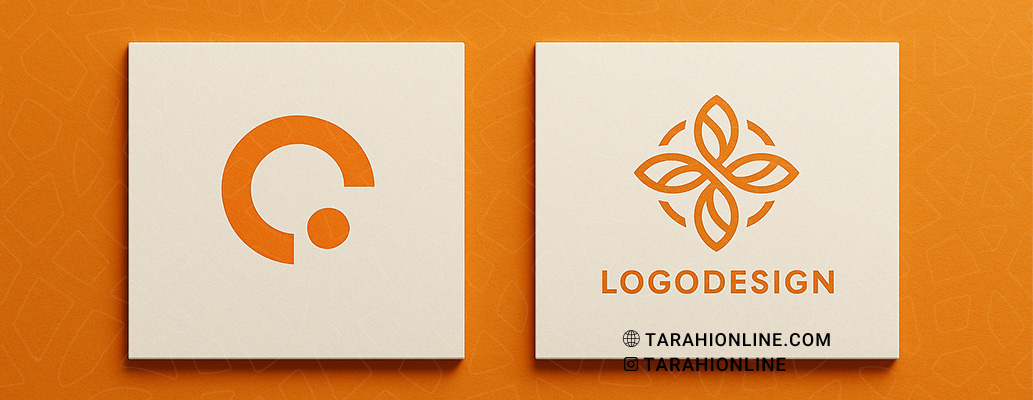
A logo, as a cornerstone of a brand’s visual identity, plays a critical role in introducing and establishing a business’s presence in the minds of its audience. One of the most common questions in the world of graphic design is whether a simple logo is more effective than a complex one. In this article, we explore the advantages and disadvantages of each, the factors influencing the choice of design, and real-world examples to provide a comprehensive answer to this question.
Defining Simple and Complex Logos
Simple Logo: A simple logo uses minimal visual elements, clean lines, and a limited color palette. These logos are typically minimalist and convey their message directly without complexity. Well-known examples include the logos of Nike and Apple.
Complex Logo: A complex logo incorporates intricate details, varied patterns, multiple colors, or decorative fonts. This type of design is often used to showcase a brand’s cultural, traditional, or multifaceted identity. The original logo of Starbucks is an example of a complex design.
Advantages and Disadvantages of Simple Logos
Advantages
-
Readability and Recognizability: Simple logos are easily memorable and remain clear even at small sizes, such as on favicons or business cards.
-
Versatility: These logos adapt well to various media (print, digital, advertising) and are flexible with brand evolution.
-
Timelessness: Simple designs are less influenced by fleeting trends, often enjoying a longer lifespan.
-
Cost-Effectiveness: Designing and implementing simple logos typically requires less time and expense.
Disadvantages
-
Limited Detail: Simple logos may struggle to convey the full depth of a complex brand.
-
Risk of Similarity: Due to their minimal elements, there’s a risk of resembling other brands’ logos.
Advantages and Disadvantages of Complex Logos
Advantages
-
Expressing Multifaceted Identity: Complex logos can effectively communicate a brand’s story, culture, or values.
-
Visual Appeal: Intricate details and vibrant colors can capture greater attention from audiences.
-
Suitability for Specific Brands: Traditional, luxury, or culturally focused brands may benefit from complex logos to highlight their authenticity.
Disadvantages
-
Lower Readability: Fine details may get lost in small sizes or constrained media.
-
Higher Costs and Time: Complex logos are generally more expensive and time-consuming to design and reproduce.
-
Need for Updates: Complex logos may appear dated as design trends or market needs evolve.
Factors Influencing the Choice of Logo Type
-
Business Type and Industry: Tech brands like Google and Amazon often lean toward simple logos, as simplicity aligns with innovation and accessibility. In contrast, luxury brands like Versace or traditional brands may opt for more complex designs.
-
Target Audience: Younger, tech-savvy audiences may respond better to simple logos, while traditional or niche audiences may find complex designs more appealing.
-
Media Usage: If the logo will appear across digital platforms, billboards, and product packaging, simplicity often ensures greater functionality.
-
Brand Values and Message: A logo that aligns with the brand’s identity and message, whether simple or complex, will be more successful.
Real-World Examples and Analysis
Nike Logo (Simple)
The Nike logo, known as the "Swoosh," is one of the simplest yet most powerful logos in the world. With a single curved line, it conveys movement, speed, and motivation. Its simplicity makes it versatile for use across various media, from athletic shoes to digital ads.
Starbucks Logo (Complex to Simple)
Starbucks initially used a complex logo featuring detailed imagery of a siren (mythological sea creature). Over time, the brand simplified its logo to improve readability and align with its modern identity. This evolution reflects the broader trend toward simplicity in today’s digital landscape.
Current Trends in Logo Design
In the past decade, many major brands, such as Google, Airbnb, and Microsoft, have simplified their logos. This trend, often called "digital minimalism," has emerged due to the growing use of digital platforms and the need for versatile, multi-purpose logos. However, some brands continue to embrace complexity to stand out and convey distinctiveness.
The choice between a simple and complex logo depends on several factors, including the type of business, target audience, and intended media. Simple logos are generally safer and more effective due to their readability, versatility, and timelessness, particularly in today’s digital world. However, complex logos can be more suitable for brands aiming to convey a rich story or cultural identity.
It is recommended that the logo design process begins with a thorough analysis of the brand’s identity and goals. Collaborating with a professional designer who can strike a balance between simplicity and visual expression is key to creating a lasting and impactful logo.
The Tarahi Online graphic and logo design team, with over ten years of experience in professional graphic and logo design, is ready to assist you and bring your ideas to life. Contact us to submit your request or place an order.
